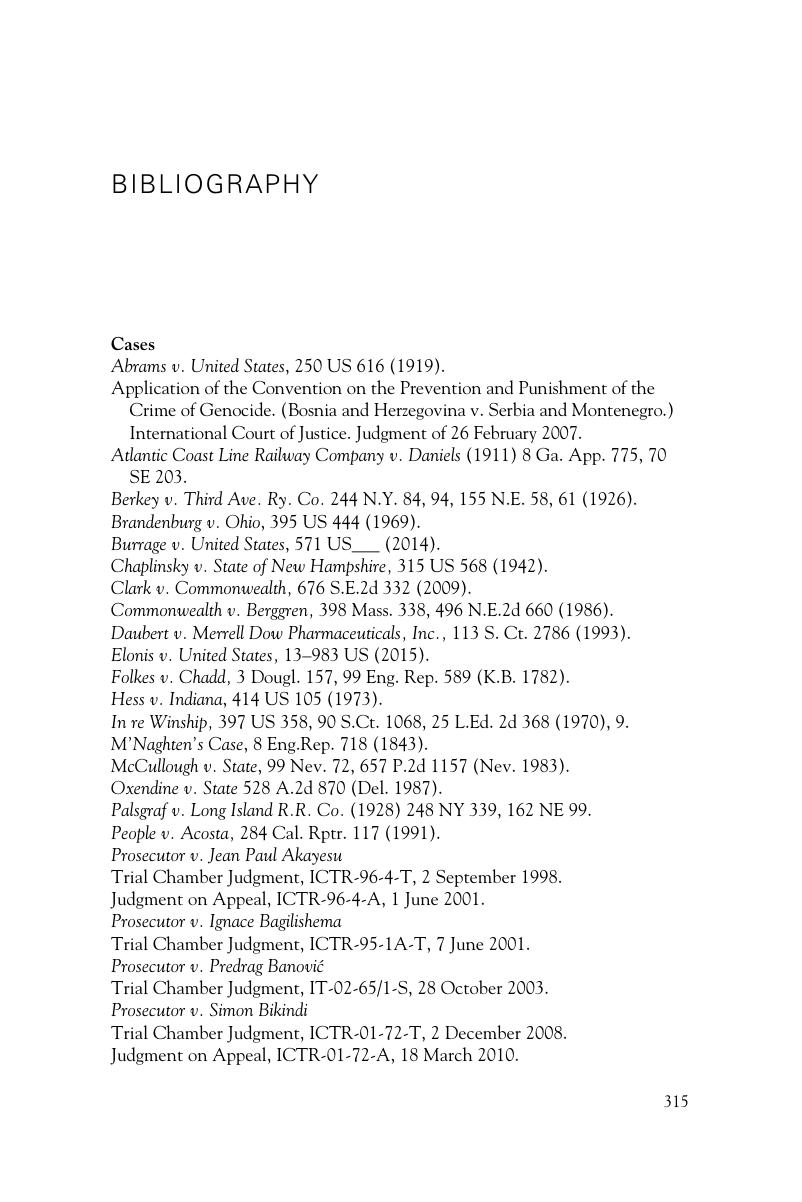Book contents
- Incitement on Trial
- Cambridge Studies in Law and Society
- Incitement on Trial
- Copyright page
- Epigraph
- Contents
- Figures
- Acknowledgements
- Chapter One Inciting Speech in International Law and Social Science
- Chapter Two Direct and Public Incitement to Commit Genocide: An Inchoate Crime
- Chapter Three Causation in International Speech Crimes
- Chapter Four Instigating Persecution: The Prosecution Case Against Vojislav Šešelj
- Chapter Five Metaphors, Agency and Mental Causation in Speech Crimes Trials
- Chapter Six Social Research in International Speech Crimes Trials
- Chapter Seven The Social Science of Inciting Speech and Persuasion
- Chapter Eight A New Model for Preventing and Punishing International Speech Crimes
- Appendices
- Bibliography
- Index
- Cambridge Studies in Law and Society
- References
Bibliography
Published online by Cambridge University Press: 31 August 2017
- Incitement on Trial
- Cambridge Studies in Law and Society
- Incitement on Trial
- Copyright page
- Epigraph
- Contents
- Figures
- Acknowledgements
- Chapter One Inciting Speech in International Law and Social Science
- Chapter Two Direct and Public Incitement to Commit Genocide: An Inchoate Crime
- Chapter Three Causation in International Speech Crimes
- Chapter Four Instigating Persecution: The Prosecution Case Against Vojislav Šešelj
- Chapter Five Metaphors, Agency and Mental Causation in Speech Crimes Trials
- Chapter Six Social Research in International Speech Crimes Trials
- Chapter Seven The Social Science of Inciting Speech and Persuasion
- Chapter Eight A New Model for Preventing and Punishing International Speech Crimes
- Appendices
- Bibliography
- Index
- Cambridge Studies in Law and Society
- References
Summary

- Type
- Chapter
- Information
- Incitement on TrialProsecuting International Speech Crimes, pp. 315 - 339Publisher: Cambridge University PressPrint publication year: 2017



